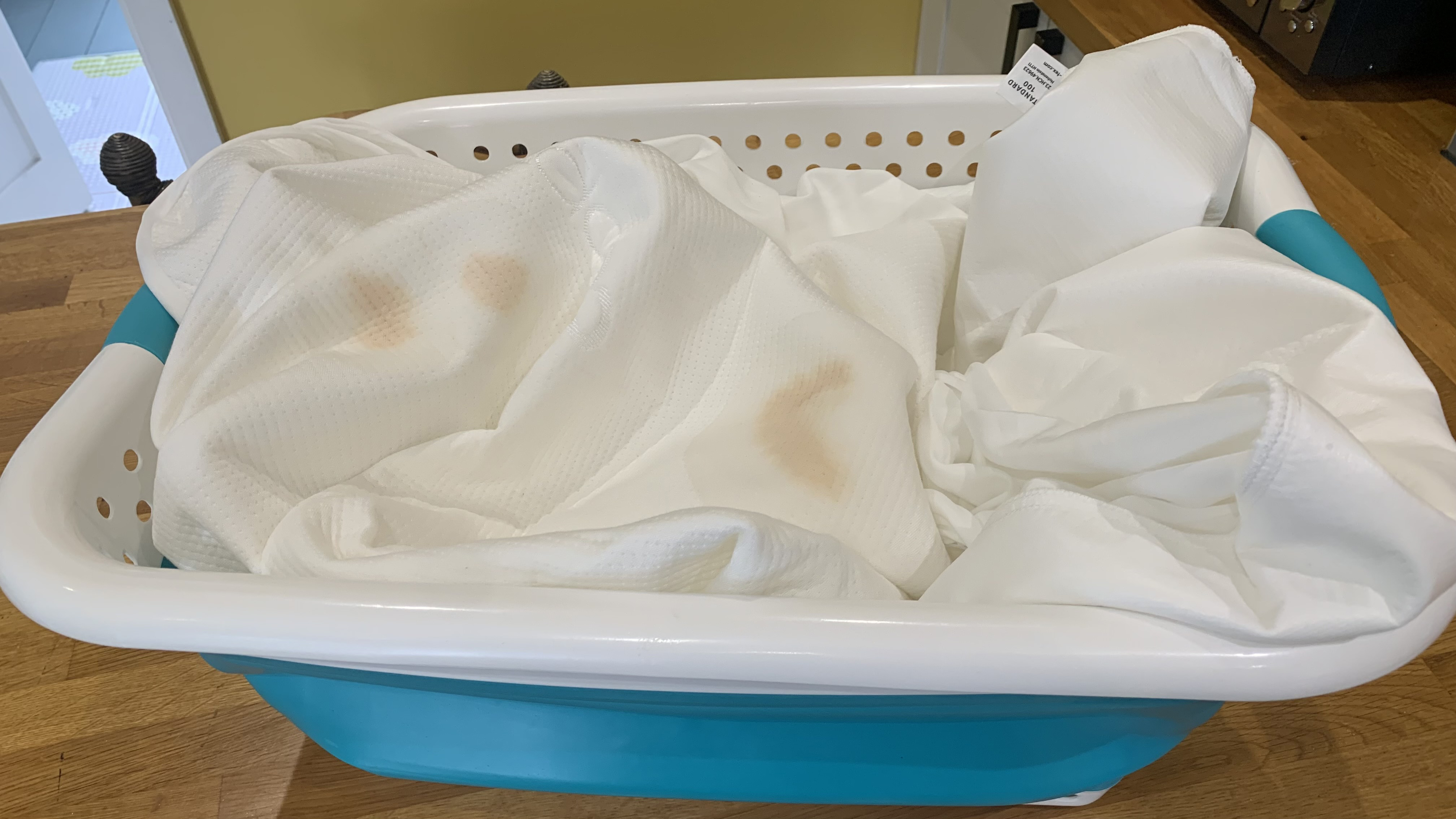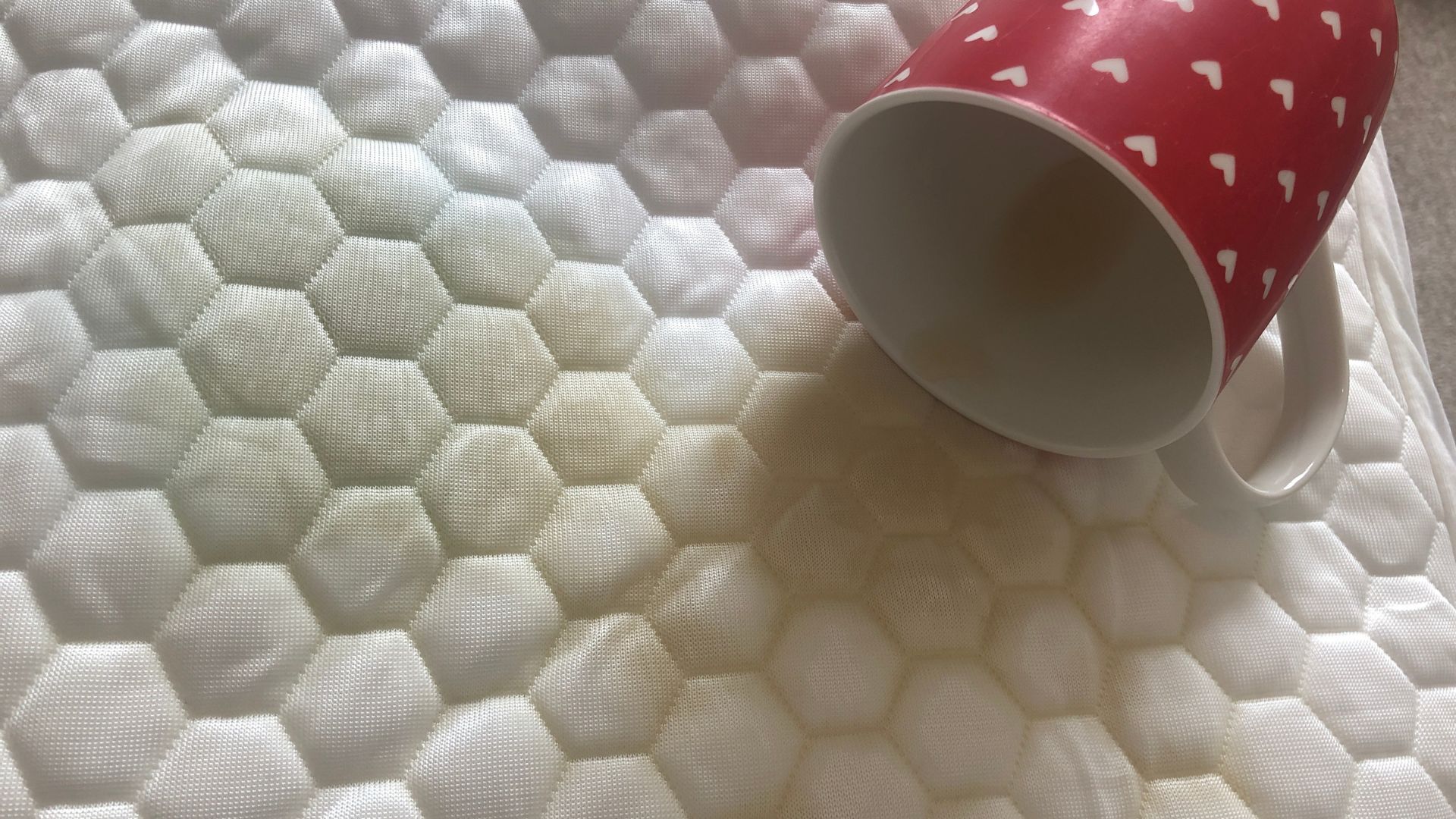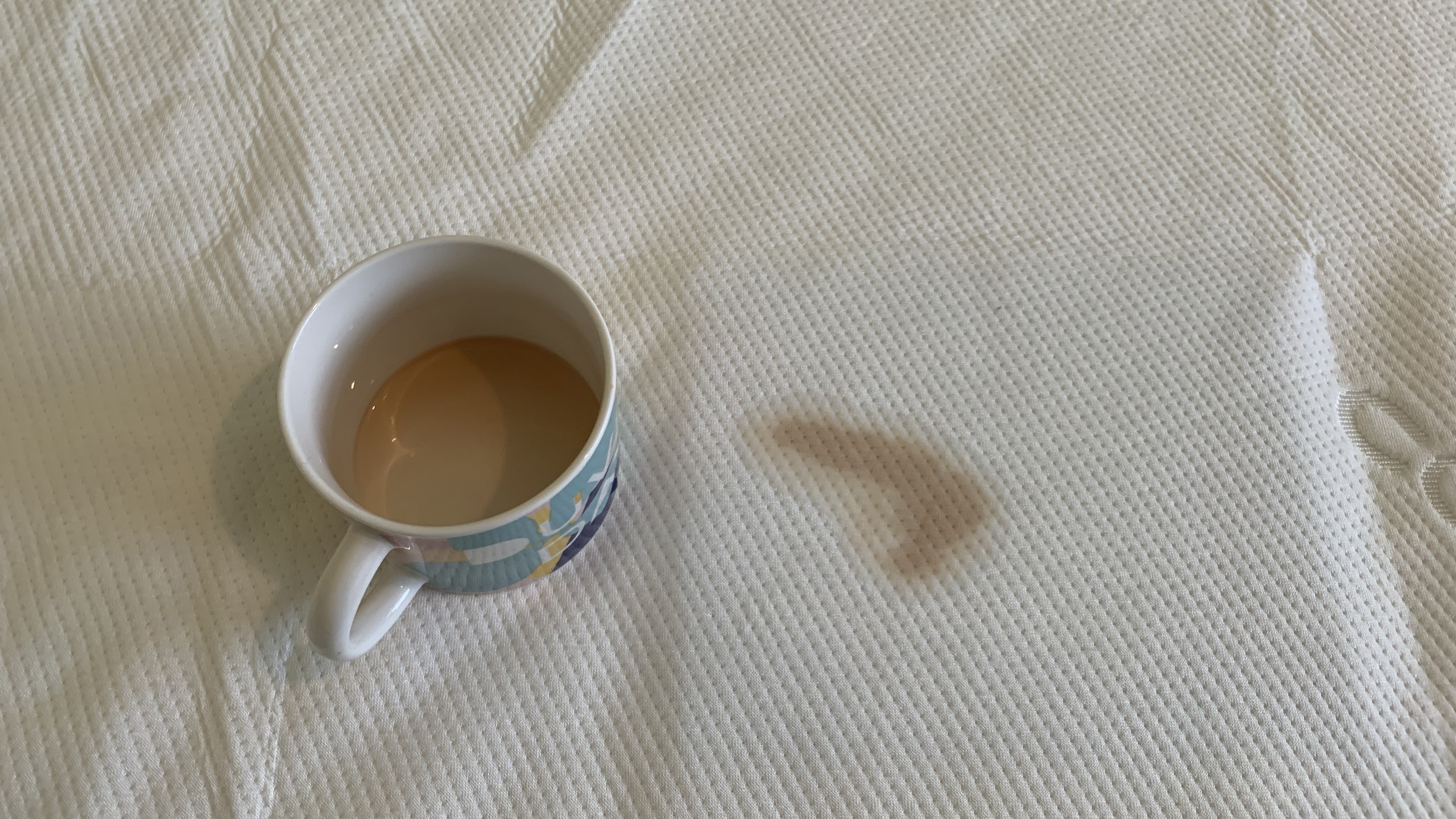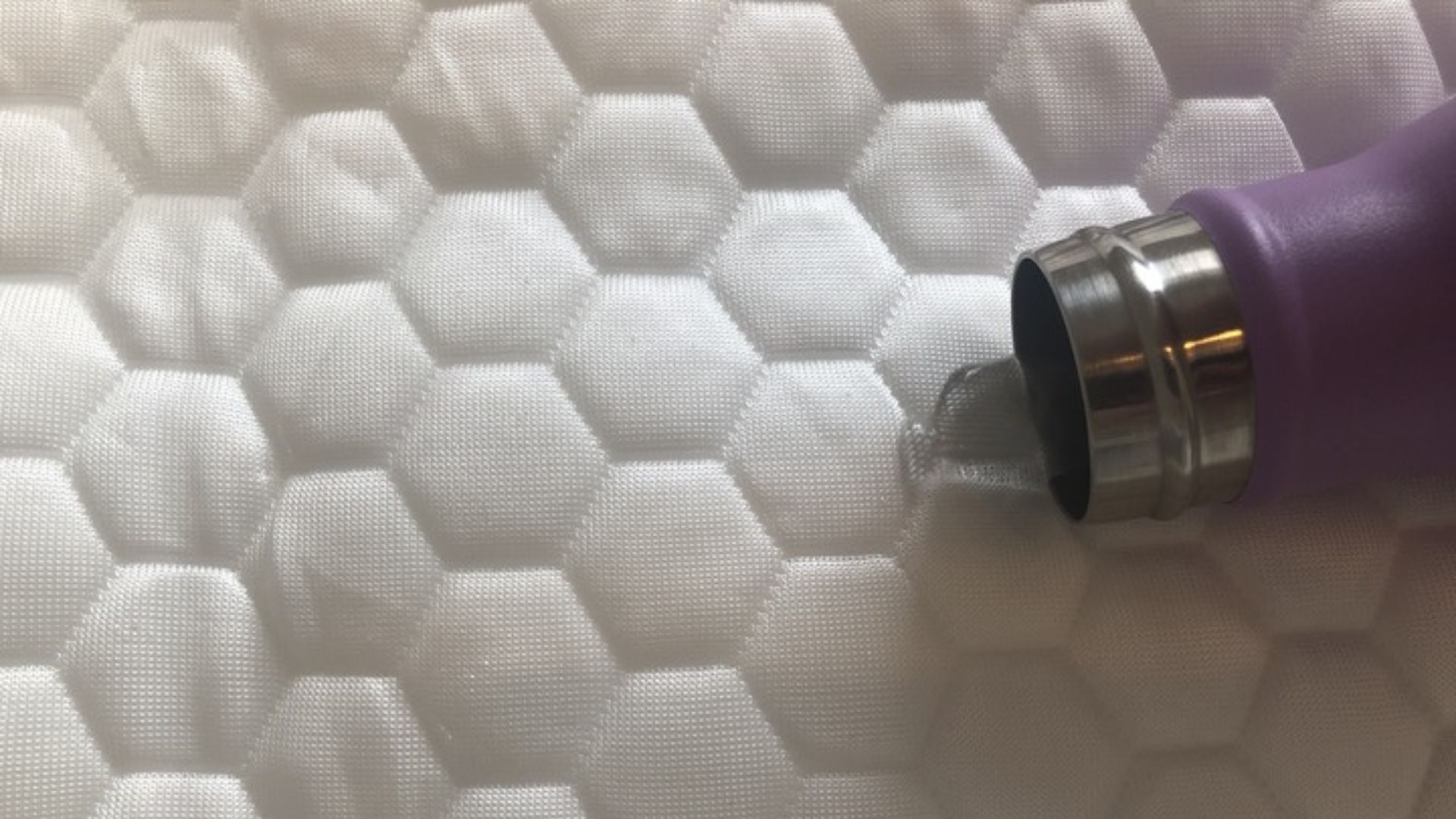How to wash and dry a waterproof mattress protector — and what to avoid
Clean your waterproof mattress protector with these simple steps and improve your sleep hygiene

A waterproof mattress protector is ideal for keeping your bed fresh for longer, but cleaning it can be a tricky task.
That's because many of the best mattress protectors incorporate waterproof material into them, which requires a slightly different care to maintain their protective qualities.
The best mattress for your body type and sleeping position is a considerable investment, so you want to protect it for as long as you can against damages, stains and spills.
This is where a waterproof mattress protector can be a lifesaver, but there are a few key dos and don’ts to follow to avoid damaging them or reducing their effectiveness.
Of course, the key rule when it comes to bedding is to always follow the manufacturer’s care instructions. But we've compiled some general tips to help you keep your waterproof mattress protector in tip top condition. Read on to find out more...
What is a waterproof mattress protector?
A waterproof mattress is a fitted cover that goes on top of your mattress, beneath your bedsheet.
It acts as a protective barrier preventing sweat, accidental spills and common allergens from getting into your mattress and causing stains, odor, mold or other long-term damage.
Sign up to get the BEST of Tom's Guide direct to your inbox.
Get instant access to breaking news, the hottest reviews, great deals and helpful tips.
The key difference between a waterproof protector and a standard one lies in the materials and how they deal with liquids.
While a standard mattress protector will typically be made from fabrics like quilted cotton or polyester blends, a waterproof mattress protector includes a thin layer of polyurethane which blocks any moisture from soaking your bed.

If you have pets, yet-to-be potty trained children or find yourself regularly spilling liquids on your bed by accident, a waterproof mattress protector is what you need. As well as acting as a barrier for liquids, they can guard your mattress against mold and dust mites.
As you shop for mattress protectors, you’re likely to come across another very similar term: water-resistant. Unlike waterproof options, some liquid can still seep into your bed when using a water-resistant mattress protector.
The odd accidental spill or leak should be ok if you clean them swiftly, but you won't get the same protection as you would with a waterproof mattress protector.
We explain more in our guide on how to choose a mattress protector for bed bugs, dust mites, urine, mold and more.
If you want high-quality waterproof matrress protectors, check out the two glowing reviews below:
- Brooklyn Bedding Luxury Cooling Mattress Protector review 2025: Cleaner sleep for less
- Coop Home Goods Ultra Tech Waterproof Mattress Protector review 2025
How to wash a waterproof mattress protector
Yes, waterproof mattress protectors are easy to clean. However, it’s important that you do it right to avoid causing any damage to the waterproof layer.
As we mentioned, your first port of call should be checking the care label for specific instructions, as this can vary from each manufacturer depending on the type of material used.
And, it's generally best to avoid dry cleaning since the heat used in this process can damage the materials. We've compiled four easy steps to follow while washing your waterproof mattress protector:
1. Pre-treat any stains

If you mattress protector has any stains then you may want to have a go at tackling these yourself first.
You can use a commercial pre-treatment, as long as it’s suitable for the type of material you are working with.
Or, you could create your own treatment by mixing together one part water with one part vinegar in a spray bottle and adding a dash of mild detergent. Spritz this on the affected area and rub the cover to work out the stain.
2. Place it in the machine on its own
Most waterproof mattress protectors are machine washable but they require gentle handling to maintain their protective layer.
Place the protector on its own in the machine, as mixing it with other clothes or bedding may mean that you're overloading the drum, and you don't want it to catch on any fastenings.
3. Run it on a gentle or delicate cycle
Next up, add your detergent. Make sure to use just around 1/4 of what you normally use when washing clothes as too much detergent can cause a build-up of residue on the fabric.
Also, avoid using fabric softeners as this can cause damage to the waterproof layer.
Always choose a gentle or delicate cycle with cool water (around 30 degrees) since this will effectively lift the stains and remove any bacteria. Any hotter, and you may see damage or changes to the shape of the waterproof layer.
4. Handwash it (optional)
If your mattress protector is delicate and the care instructions say you can’t put in the washing machine then fill a bathtub with lukewarm water and add a couple of drops of mild detergent.
Submerge the protector and gently hand-wash it, to remove any dirt, debris and stains. Finally, rinse thoroughly in clean water to get rid of all the soap residue.
How to dry a waterproof mattress protector
Before you set about drying your waterproof mattress protector, check the care label again to ensure that you’re following the manufacturer’s instructions.
✅ 1. Do tumble dry it on a low heat: Most waterproof mattress protectors can be machine dried. However, use the lowest heat setting possible so you don't damage the waterproof membrane.
✅ 2. Do line dry it: If the weather is good then hang your protector out on the line. However, if you have allergies, you may want to reconsider this method as often allergens can stick to the damp fabric and trigger allergy symptoms. Don’t hang your mattress protector in direct sunlight as this may cause a bleaching effect to the fabric.
❌ Don’t iron your waterproof mattress protector: The high heat can damage the waterproof layer and render it useless.
❌ Don’t wash your mattress protector too often: Of course, the frequency you wash it will depend on the usage but try to limit this to around every two to three months to keep it hygienic without adding additional wear.
7 signs that it’s time to replace your waterproof mattress protector
Just like mattresses, waterproof mattress protectors don’t last forever – if yours is over five years old, it's time that you upgrade. Here are seven other signs that it’s time to replace it:
1. There's visible damage: Wear and tear is bound to happen when you’re sleeping on your mattress protector every night. Still, it’s a good idea to regularly check for any holes and rips as this can compromise it's ability to block liquids.
2. You've noticed thinning spots: If you see any excessive thinning or worn out areas, it’s sadly time to get rid of your protector and replace it. You’ll usually spot these spots around pressure point areas— where you regularly come in direct contact with the bed.
3. Liquids seep through: It sounds obvious, but you shouldn’t be noticing that liquid is seeping through to your mattress when you're using a waterproof mattress protector. So if this is happening, swap to a new one before there is damage to your mattress.

4. It smells: If you begin to notice a persistent smell from your mattress protector, mildew or mold growth could be responsible, which usually occurs when there is trapped moisture. Protect your health and purchase a new one.
5. You’ve washed it too much: Washing your mattress protector too often can lead to increased wear and tear. A good workaround for this is to have a couple that you can rotate.
6. Loss of fit: If your mattress protector no longer fits snugly atop your bed, it's probably a sign it's lost its shape and it's time to get a fresh one. A slippery cover which bunches up or crinkles each time you try to change your position isn't going to help you get a good rest.
7. Your allergies have become worse: Find yourself sniffling and sneezing more than usual? Your mattress protector may not be blocking out allergens effectively. Depending on your sleep environment (for example, you may live in an area prone to allergens), you can also decide whether you need a mattress protector or a full encasement.

Rachael is a freelance journalist based in South Wales who writes about lifestyle, travel, home and technology. She also reviews a variety of products for various publications including Tom’s Guide, CreativeBloq, IdealHome and Woman&Home. When she’s not writing and reviewing products she can be found walking her Sealyham and West Highland terrier dogs or catching up on some cringe-worthy reality tv.
- Becky GeorgeSleep Staff Writer
You must confirm your public display name before commenting
Please logout and then login again, you will then be prompted to enter your display name.
